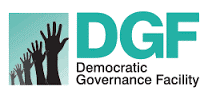
Issue 9 | April 18, 2020
The Potential Impact of the Covid-19 Pandemic in Kenya
By Jason Rosario Braganza** | Guest @ACODE_Uganda
 The Covid-19 or coronavirus was first reported in late December 2019. Since then, Covid-19 has become a global pandemic with confirmed cases and deaths across 206 countries. The spread of the virus has led to unprecedented actions by countries globally including border closures, quarantines, curfews, and so on, not seen since the Second World War, in a bid to slow down the global contagion that is already underway in Europe, Americas, and now Africa. In Kenya, as of 1st April 2020 there were 81 confirmed cases of Covid-19. (Source: Ministry of Health, Kenya, 1st April 2020).
The Covid-19 or coronavirus was first reported in late December 2019. Since then, Covid-19 has become a global pandemic with confirmed cases and deaths across 206 countries. The spread of the virus has led to unprecedented actions by countries globally including border closures, quarantines, curfews, and so on, not seen since the Second World War, in a bid to slow down the global contagion that is already underway in Europe, Americas, and now Africa. In Kenya, as of 1st April 2020 there were 81 confirmed cases of Covid-19. (Source: Ministry of Health, Kenya, 1st April 2020).
In an integrated and globalised world, the measures to curb the spread of Covid-19 will undoubtedly have an impact on the global economic system as well as long lasting social consequences across different countries. Africa is approximately 3 or 4 months behind the global contagion curve and therefore urgent concerted efforts need to be undertaken to mitigate the contagion taking a foothold on the continent. It is uncertain the extent to which the fragile health infrastructure could cope with Covid-19 pandemic. On the economic front, the continent is integrated into the global trading system and being a net importer, Covid-19 is likely to cause a deep recession in many countries including the larger economies like Kenya.
Potential Impact of Covid-19 on Kenya
The global and national measures being put in place to slow the spread of the Covid-19 virus will have significant impact on the Kenyan economy. This impact is expected to be felt across all sectors of the economy and society.
Growth - The Kenyan economy has been stuttering for the past decade averaging between a 5% and 6% growth rate. Kenya’s continued reliance on the export of primary commodities and inability to move up the value chain across all major economic and productive sectors make the economy extremely vulnerable to the spill-over effects of the Covid-19 virus. The export share of GDP has been on the decline for the past decade and strategies to develop export oriented strategies are yet to be fully integrated in any meaningful way. The Covid-19 pandemic shock could adversely affect Kenya's foreign reserves in the medium term. Being a net importer of raw materials, the Covid-19 virus is going to disrupt in a significant way the business operations in the Kenyan economy. Foreign exchange from remittances and tourism are likely to drop dramatically as diaspora deal with the effects of lockdowns and being furloughed by their employers; and with international travel practically grounded, tourist visits will collapse. The tourism industry will suffer a double whammy of missing out on both international and domestic tourists given the restriction on movement. MSMEs are likely to bear the brunt of this disruption from the slow-down of global supply chains and will see their business operations either grinding to a halt or go out of business altogether. It is likely the Kenyan economy will experience a reduced growth rate. The National Treasury, in its 2020 Budget Policy Statement, noted a lower than expected growth in 2019 at 5.6% against a target of 6.2%. The onset of the Covid-19 virus and specifically now with reported cases in Kenya, this growth rate is likely to be revised further downwards to about 2% to 3%.
Revenues - The result of this lower than expected growth in 2019 will have a direct impact on the revenues raised in order to fund its next fiscal period. Revenue targets in Kenya have been missed for the past decade and according to the National Treasury ordinary revenue targets for the current fiscal year have been revised downwards by Kshs 33.4 billion to Ksh. 1.78 trillion. Despite this downward revision on revenues, the National Treasury has planned for an increase in recurrent expenditure and reduction of development expenditure. These measures are noted on account of increase in interest payments, wages & salaries as well as pensions payments. (Source: Budget Policy Statement 2020).
Debt - The onset of Covid-19 in Kenya is likely to worsen the country’s debt position due to a depreciation of the Kenya shilling which will increase the value of the national debt. Overall debt might also worsen from the borrowing the government will need to take to finance the stimulus packages planned to smooth over businesses and citizens during this period. With an anticipated contraction of the economy resulting in reduced revenues, both the public and private (individual) debt situation is likely to worsen in the short and medium term. Kenya’s national debt has been a growing concern given the government’s increased appetite for commercial and non-concessional loans that attract higher interest rates. A parallel concern is how this accrued debt especially from instruments such as the ‘Eurobonds’ is being used. In some cases funds raised from these bonds are being used to pay off existing debts instead of investments in the country’s national development agenda. The most recent figures indicate the country is headed towards a debt precipice. Public debt stands at over Ksh 5 trillion (US$50 billion) or 60.15% of Kenya GDP, a 4.97 percentage point rise from 2017, when it was 55.18% of GDP. According to the most recent debt sustainability assessment, the government has breached key debt service to revenue ratios, with concerns on the increased proportion of commercial loans with high interest rates.
Unemployment - As Covid-19 takes a foothold in Kenya and the government measures to minimise the spread will be accompanied by businesses closing and workers being sent home, there is a high risk of sending a significant number into unemployment. The knock-on effects of how businesses react to the on-going measures to minimise the spread of the virus will have an impact on unemployment numbers beyond the tipping of the virus curve and the recovery phase post Covid-19. The ensuing lower predicted growth rates means there will be a lag in businesses readjusting back to full operations. Therefore in the short and medium term, Kenya can expect a rise in unemployment. Furthermore, the number of jobs being created in the short and medium term will decline further than those of the 2018 figure of 840,600. The rise of unemployment in country will bring with it both economic and social pressures to contend with. Rising unemployment in Kenya remains a major challenge for the government despite the modest economic growth of between 5% and 6% over the past decade. It is estimated that in the decade from 2015 to 2025 that 9 million individuals will enter the labour market in Kenya and at current rate of jobs being created this will mean the unemployment rate increasing from 9.3% to about 10% in 2020. The number of jobs created in 2018 was 840,600 down on the 2017 figure of 909,800 against 7 million unemployed (Source: KNBS).
Addressing the Medical Emergency
It is important to note that low confirmed numbers do not equal low contagion. Therefore, testing is the most critical component in determining the depth of contagion in the country, and will inform further measures to be taken with regards to isolation and treatment. The measures the government of Kenya has taken in response to the onset of Covid-19 within its borders are significant and positive. The move to close schools, restrict movement, promote cleanliness and personal hygiene have been well timed when compared with other countries globally. While there are still gaps in actually dealing with the peak epidemic in terms of medical facilities like health centres, ventilation machine, and intensive care units across the country, being behind the global contagion provides the government with a time buffer to cover these gaps.
Buffering the Economy
Interventions to keep businesses afloat during this period will needs a combination of both fiscal and monetary policy interventions. The overall objective of the policy measures will be to ensure cash flow in the economy continues as uninterrupted as possible. The measures by the central bank to cut its base rate is a welcome first step as this will provide some liquidity to commercial banks to support businesses especially. It will also enable the National Treasury consider some recovery fund and instrument options that can be used to ease the financial stress the economy is going to experience in the short to medium term. The current rate cut will need to go further than the 7.25% announced in March 2020. Further rate cuts will likely be needed to further cushion the economy as the government takes more actions to buffer businesses. Furthermore, the announcements made by the government to reduce certain taxes are the first wave of policy responses we are likely to see. In particular, the suspension of CRB listings backdated to 1st March 2020 will be a welcome relief to business owners who are at most risk during this crisis. The financial sector is also enacting relief measures to support SMEs in restructuring their loans as well as meeting the costs related to the extension and restructuring of loans. To facilitate increased use of mobile digital platforms, banks will waive all charges for balance inquiry. In addition, to minimise the use of cash, the cost of mobile money transactions has been waived up to Ksh 1,000.
These measures are welcome but will need to go further as Covid-19 stretches its footprint across the country. In addition to further base rate cuts, the government will need to consider developing financing instruments that can be made available to businesses. For MSMEs, the government might want to consider more radical reliefs for example suspending VAT, deferring the turn over tax, and suspending other rate and permit fees that require monthly renewals. Such proposals will provide much needed cash flow for the MSME sector in Kenya and facilitate continuation of operations. For domestic manufacturers and industry, government could pass emergency legislation to get the sector players to repurpose their production line towards producing much needed health care equipment. For example, the apparel and textile sector could be asked to produce personal protective equipment for healthcare workers; other industries and manufacturing firms could also join the efforts to combat Covid-19. Other proposals might be considering national stadia into temporary hospital and treatment centres as a way of easing the burden on the country’s stretched hospital infrastructure. Hotels and other similar facilities could be repurposed as quarantine centres across the country to support the medical efforts and ease the stress on the health system in the short to medium term. Such interventions and initiatives will keep some several businesses across different supply chains operating and enhance even further the preparedness of country to deal with the worst that is yet to come.
Borrowing will be at the centre of any interventions the government needs to take in ensuring the economy is not crippled to its knees. With the red flags already flying high in the National Treasury’s face over national debt, the government will need to assume a pragmatic approach with its creditors. Consolidating and restructuring the country’s debt repayments will go a long way to freeing up resources to be used to cushion the economy. Negotiating a suspension or either a payment of the principal or interest amounts to creditors would go some way in easing the fiscal pressure the National Treasury is going to come under in the next few weeks and months in designing policy interventions. Similarly, the government will need to negotiate even less conditionalities on credit lines from institutions such as the IMF and the World Bank if it is to create the fiscal and monetary policy space to see itself through this crisis. The more proactive the government interventions are before the peak of the Covid-19 pandemic in Kenya, the softer the economic blow this crisis will have. The road to recovery will be long and because Kenya is about 3-4 months behind the pandemic curve, there will be an additional lag in recovery as other regions begin to flatten their curve.
-----------------------
** The author is an Economist from Kenya writing in an independent capacity.
|
|





+256 312 812 150 | Leave a comment | Center for Budget and Economic Governance
Subscribe To Our News Letter | Edit Subscription | Unsubscribe